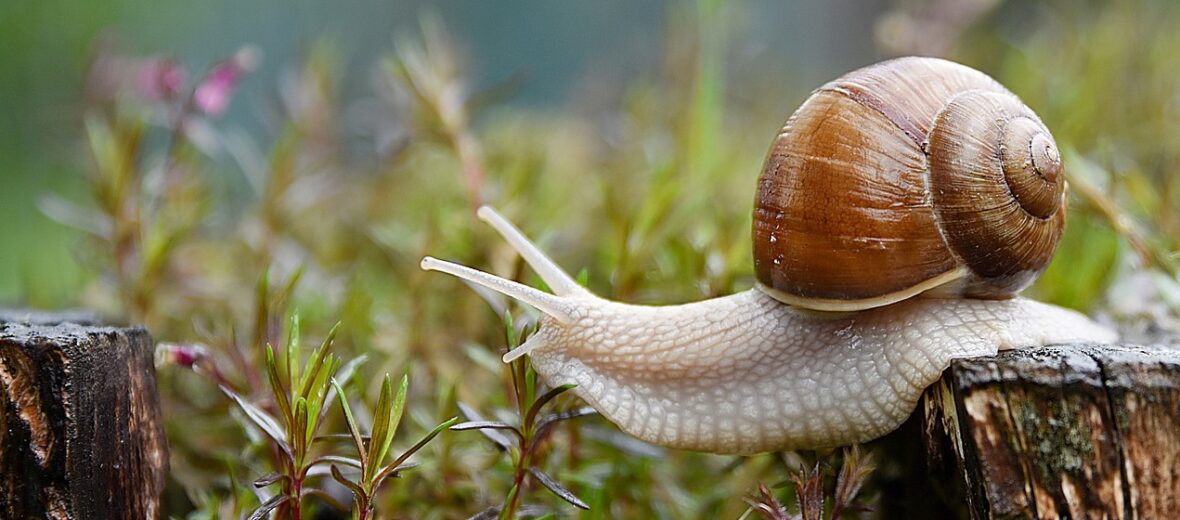
The bane of home gardeners everywhere, the garden snail is a type of snail species known for leveling gardens overnight. Snails are part of the mollusk family; whether they are land-based or aquatic. These slow-moving mollusks can be found on every continent, sans Antarctica, thanks to humans. Land-based gastropods, such as these snails, comprise the largest portion of the mollusk family at around 80%. They also display the broadest range of behaviors, habitats, and forms of any animal.
First the Stats…
Scientific name: Cornu aspersum
Weight: Up to 1.6 ounces
Length: Up to 1.3 inches
Lifespan: Up to 3 years
Now on to the Facts!
1.) The head of these snails has 4 tentacles: 2 for sensing light and dark (like basic eyes), and 2 that are used for touch.
2.) Garden snails produce a mucus that acts as a friction buffer between their foot and the surface they are sliding along. Hence the snail tracks left behind.
3.) The garden snail’s mouth is located under its tentacles. This mouth has a toothed ribbon called a radula, which they use to sort of chew up their food. This feature is exclusive to mollusks, and many of them have a radula.
4.) Snails are hermaphrodites and both receive fertilization during mating.
5.) Escargot is a meal made from cooked land snails (Helix pomatia). I’ve had it before. Not a fan.
But wait, there’s more on the garden snail!
6.) The research team from Boston Children’s Hospital as well as MIT created an adhesive that is similar to snail and slug slime. It’s used to repair heart defects but has only been tested on pigs, thus far.
7.) Garden snails are nocturnal (active at night).
Did you know…?
There are an estimated 150,000 species of gastropods! They live in almost every habitat; from the deep ocean world to the harsh deserts.
8.) If it gets too dry for these snails, they pull inside their shells and seal the opening with mucus called epiphragm.
9.) In colder winter months, these critters will hibernate.
10.) Birds, amphibians, reptiles, arthropods, ants, and more all prey on garden snails.
But wait, there’s still more on the garden snail!
11.) They feast on flowers, fruit, vegetables, and leaves.
12.) A land snail’s shell is made up of calcium carbonate.
Did you know…?
Caffeine has been proven to repel land snails from plants.
13.) Garden snails move at .51 inches per second, at top speed.
14.) These snails lay up to 86 eggs, at around 6 days after copulation.
15.) Up to 6 clutches of eggs are laid each year.
Now a Short Garden Snail Video!
Be sure to share & comment below! Also, check out the Critter Science YouTube channel. Videos added frequently!
Want to suggest a critter for me to write about? Let me know here.



